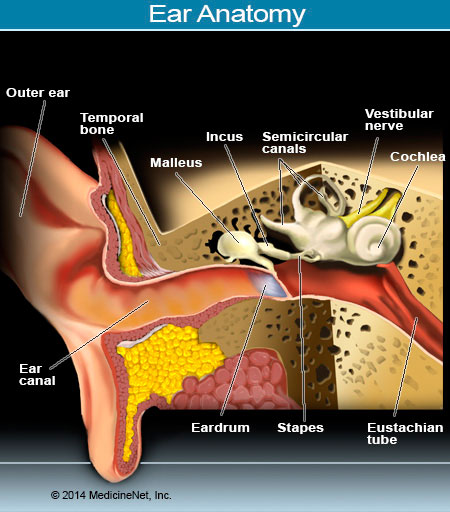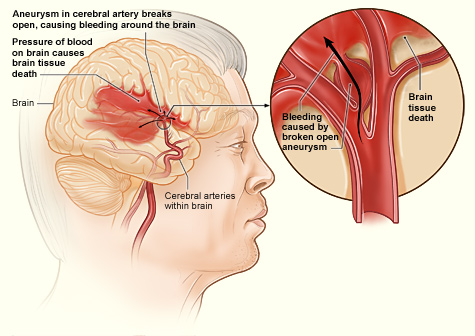
15 Causes of Hearing Loss and how you can lessen your chances of suffering from it
Imagine if the volume was suddenly turned down on your world, if the vibrant caterwaul of modern life somehow became dull and distorted. Imagine people in shops or on the streets becoming frustrated (or even offended) when you couldn’t hear them talking to you, or the disorientation you might feel at only noticing oncoming traffic by sight alone.
Now try to imagine that world slipping away even further into complete silence. Your favourite songs would fade into memory; the sweet, familiar voices of loved ones would never be heard again.
It sounds horrible, doesn’t it? Yet this can be a harsh reality for the 11 Million British people (that’s 1 in 6 of us) who suffer from some form of hearing loss. It isn’t always as extreme as the scenarios above, but any form of hearing loss can be life changing.
Sensorineural hearing loss (SNHL) is a generally permanent condition, with symptoms ranging from mild to complete loss of hearing. It is usually the result of damage to the inner ear, either to sensitive hair cells, or to an important component in the hearing process, such as the cochlea or cranial nerves.
In this article, we’ll be taking a look at what causes hearing loss, as well as how you can lessen your chances of suffering from it.

According to a recent study, a person suffering from a traumatic brain injury (TBI) is 2.1 times more likely to experience hearing loss than an uninjured person. The study concluded that traffic accidents put people most at risk and that males suffering with concussions were more likely to lose their hearing than females
But why do head injuries carry such a high risk of hearing loss? Inside the middle ear are three tiny bones, known to doctors as the ossicles. These bones are individually known as malleus, incus and stapes (or hammer, anvil and stirrup). If any of these bones (or the cochlea itself) are damaged, then the person affected is likely to suffer at least temporary hearing loss. In addition, damage to the brain can cause the organ to process sound incorrectly, resulting in hearing loss even if the inner ear is unharmed.
A concussion, the most common form of head injury, is a minor form of TBI and is usually caused by a sudden, violent blow to the head or jolt of the neck. If this blow affects the auditory pathway, then hearing loss is more than likely to follow.
Damage to the ear from a head injury can also manifest itself via dizzy spells, vertigo (a feeling of disorientation, as if the room is ‘spinning’) and tinnitus.

If a person is exposed to excessive noise, it can be the cause of noise-induced hearing loss (NIHL). NIHL can be temporary (such as going slightly deaf for a few days after a concert) or permanent. NIHL occurs when the delicate hair cells of the inner ear are damaged or destroyed. Once this happens, they do not grow back.
 Although NIHL affects people of all ages, including children, this slow, progressive erosion of hair cells creates a condition similar to that of ageing, with people presenting hearing loss symptoms akin to those caused by old age.
Although NIHL affects people of all ages, including children, this slow, progressive erosion of hair cells creates a condition similar to that of ageing, with people presenting hearing loss symptoms akin to those caused by old age.
NIHL can be caused by one-time exposure to a single loud event (such as an explosion or a loud noise from your radio earpiece) or else by prolonged exposure to loud noise. In either case, the hearing loss is usually gradual, with high frequency sounds being the first to go in most cases.
For the purposes of this piece, a ‘loud noise’ is characterised as being anything above 85 decibels. This is because any sound louder than 85 decibels has the potential to cause NIHL. To better put that into perspective, the low hum of your refrigerator is about 45db, while a normal conversation runs to about 60db. Sirens are around 120db and, perhaps damningly, an MP3 player at full volume can reach 105db.
Distance from the sound and length of exposure are important factors when discussing NIHL. For example, a siren suddenly blaring out across a busy street might give you a start, but it is unlikely to cause any long-term hearing damage. After all, it is across the street and only lasts for a few seconds. However, if you wear headphones and listen to music at full volume every day, you’re actively taking your chances.
NIHL prevention is simply a matter of vigilance. Make sure you’re wearing some form of ear protection if you happen to be exposed to loud, prolonged noise, turn your MP3 player’s volume down (gradually, if this helps) and be wary of regular exposure to any sound greater than 85db.
Each of these steps is important because, at the time of writing, there is no substantial cure for NIHL.

Acoustic neuroma (also known as vestibular schwannoma) is a type of noncancerous tumour that grows on the nerve that leads from the inner ear to the brain. The symptoms can take years to develop, as the tumour is slow growing. As the tumour (or tumours) increase in size, they may place pressure on the facial nerves, causing lack of sensation and sensitivity.
The main issues caused by acoustic neuroma, however, are hearing loss and loss of balance/dizziness. Other symptoms may include tinnitus, headaches, double vision, ataxia (problems with limb coordination) and/or partial deafness. In rare cases, this illness can cause a build up of fluid within the skull (hydrocephalus), or even become large enough to compress the brainstem, both of which are life threatening.
The causes of acoustic neuroma are often genetic, the malfunction of a tumour-suppressing chromosome. If one parent has this condition, their child has a 50/50 chance of inheriting it. It is also difficult for doctors to diagnose, partly due to its similarity with Méniére’s Disease.
This condition cannot be prevented, but can be treated in numerous ways once it appears. Treatments range from simply monitoring the condition (with MRI or /CT scans), all the way up to stereotactic radiosurgery (whereby a small beam of radiation is targeted at the tumour in order to stop it growing). For severe cases, brain surgery is sometimes required.
If you think you may be suffering from acoustic neuroma, then you should see your GP at your earliest convenience.

Earwax is a natural, if somewhat unpleasant, creation of the ear canal. Production of this sticky, oily substance, properly known as cerumen, is a benign and useful function of the ear. Cerumen protects the ear  from potentially infectious things such as dust, dirt, foreign particles and microorganisms that may be looking to set up shop in your ear canal. It also protects the sensitive skin inside your ears.
from potentially infectious things such as dust, dirt, foreign particles and microorganisms that may be looking to set up shop in your ear canal. It also protects the sensitive skin inside your ears.
So generally speaking, earwax is a good thing. However, an excess of the stuff can cause hearing loss, particularly if you are wearing an earpiece all day long. Earwax build up occurs when your glands produce more cerumen than is necessary. The wax then hardens and builds up to the point that it blocks the ear entirely.
If this happens, your first instinct is very likely to be your worst instinct. As so many people do, you’ll find the waxy build up to be unsightly or uncomfortable and then attempt to clear your ears, perhaps with a corner of a flannel, your index finger or a cotton bud. Instead of fully cleaning the ear, this often has the effect of simply pushing the wax further in (and mixing it with outside dirt and dead skin cells as well). In these cases, the wax build up can become entrenched, causing hearing loss because the vibrations in the air simply can’t pass normally through your ear canal.
Symptoms of earwax build up can include hearing loss (obviously), tinnitus, irritation and earache. Occasionally, this condition can present the sufferer with severe pain.
The good news is that earwax tends to fall away naturally, so often no treatment is required. More good news is that, if the blockage does not clear itself up, the treatments are nothing to worry about. Often, ear-drops (such as hydrogen peroxide) are prescribed and effective home remedies include olive oil. These treatments simply soften the wax until it falls away by itself. Another effective treatment is ear irrigation, whereby a small syringe is introduced to the ear and then cleans it out.
There is also an option to have the wax sucked out. These treatments are mostly effective and quite painless.
The big risk with wax build-up is ear infection, most of which can be cured with a simple course of antibiotics.

The stereotype that elderly people are all partially deaf has often been used for comic effect in film and television, as well as on the stage. However, where most stereotypes prove unfounded, this one is, sadly, pretty accurate.
Age-related hearing loss (presbycusis) affects around a quarter of people between the ages of 65 and 75. Over the age of 75, around half of the population will experience hearing loss.
The exact causes of age-related hearing loss differ from person-to-person. Commonly, presbycusis occurs when the hair cells of the inner ear begin to naturally die off at a faster rate in old age, or when cumulative wear and tear on these delicate cells begins as the person grows older, but these examples are far from the only causes.
Additionally, some illnesses or habits are known to increase the likelihood of presbycusis. High blood pressure and diabetes can both be contributing factors, as is smoking, which has been linked with age-related hearing loss by numerous studies. Exposure to loud environments is also a danger and there are genetic factors to consider.
Avoiding age-related hearing loss is very difficult, as it ultimately amounts to avoiding old age itself. However, the best protection probably lies in taking good care of your ears while you’re still young, ensuring that you have an abundance of healthy hair cells stockpiled for those winter years.

Viral infections of various kinds (but especially cytomegalovirus, or CMV) are responsible for a whopping 40% of all congenitally acquired hearing loss cases.
 Temporary hearing loss following a viral infection is sometimes attributed to labyrinthitis, a type of inner ear infection that causes the labyrinth of the ear to become inflamed. This can cause similar symptoms to both acoustic tumours and earwax build-up, as the sufferer often experiences dizziness, vertigo and nausea, as well as hearing loss. Thankfully, it is usually easy to treat provided the sufferer sees a doctor early enough.
Temporary hearing loss following a viral infection is sometimes attributed to labyrinthitis, a type of inner ear infection that causes the labyrinth of the ear to become inflamed. This can cause similar symptoms to both acoustic tumours and earwax build-up, as the sufferer often experiences dizziness, vertigo and nausea, as well as hearing loss. Thankfully, it is usually easy to treat provided the sufferer sees a doctor early enough.
However, the three main viral causes of more permanent hearing loss (CMV, measles and mumps) can be a bit more difficult to deal with.
Cytomegalovirus is basically the second cousin of herpes, which causes cold sores and chickenpox, among other annoying things). Like herpes, once it has been contracted, CMV stays with you for the rest of your life. It is usually harmless unless ‘activated’ by some weakening of the immune system. CMV can cause problems for babies if it develops during pregnancy or early childhood, both of which can lead to hearing loss. Typical symptoms of CMV include aching muscles, fatigue, nausea, high temperatures, a sore throat and swollen glands.
As previously stated, CMV is a leading cause of childhood hearing loss. However, the relationship between CMV and sensorineural hearing loss is still not fully understood. What is known is that between 30 and 50% of children with clinically apparent CMV will develop SNHL, an alarming statistic indeed. Sadly, there is nothing that can be done to cure CMV, although it can only be passed on whilst ‘active’.
Keeping yourself and your environment clean will help you to avoid catching it in the first place, but there is no perfect strategy.
German measles (also known as Rubella) is another disease that commonly strikes during childhood, although it can also occur in adults. Caused by the Rubella virus (a member of the Toga virus family), this disease is not to be confused with regular measles (of the non-German) variety, which is caused by an unrelated virus and presents accordingly different symptoms.
Worryingly, it is entirely possible to have German measles without displaying any symptoms at all. However, it is more common for sufferers to present fevers, aching joints, swollen lymph nodes and sometimes conjunctivitis.
According to the World Health Organization, the rubella virus is the leading cause of vaccine-preventable birth defects in the world, as it seriously damages the still-forming nerves of the foetus.
If an ear infection is contracted whilst a person is grappling with German measles, they have a 1 in 10 chance of experiencing hearing loss as a result. Beyond vaccination, there is no known cure for this virus.
Mumps is a type of parotitis (an illness which attacks the parotid salivary glands), it is caused by the mumps virus. Symptoms include fever, aching muscles, poor appetite and general fatigue, followed by a painful swelling of the salivary glands. The mumps virus can seriously damage the cochlea, which can cause outright deafness in some cases. Fortunately, this is a relatively rare occurrence, though it still bears consideration. If it does happen, hearing aids and cochlea implants may be used to help.
As with the other two viruses on this list, there is presently no known cure for the mumps virus. The best defence, therefore, is to seek immunisation before the virus has a chance to strike.

Shingles (sometimes called ‘herpes zoster’) is another viral disease that can cause hearing loss. Caused by the same virus that gives us chicken pox (and therefore a relative of CMV), shingles normally presents as a type of painful, blistering skin rash that sometimes comes with a headache and feeling of fatigue as it attacks the nervous system.
 About a third of sufferers experience hearing loss if the rash is localised around the head, face or ear.
About a third of sufferers experience hearing loss if the rash is localised around the head, face or ear.
The two most common conditions that connect shingles and hearing loss are labyrinthitis and Ramsay Hunt Syndrome.
Labyrinthitis, as previously discussed, is an inflammation of the inner ear. Shingles causes this inflammation either by directly infecting the labyrinth or else though infection contracted as the blisters begin to heal. In most cases, labyrinthitis is treatable and causes only temporary symptoms. However, this treatability is contingent on the sufferer seeking medical help early enough. If not, then there is a genuine risk of symptoms becoming permanent.
Ramsay Hunt Syndrome occurs if the shingles infection reaches the facial nerves nearest to your ears. It can cause weakness, or even paralysis, across one side of the face, as well as vertigo and a very painful rash that can flare up both inside the mouth and throughout the ear (affecting the eardrum, ear canal etc).
Shingles can be a pathway to any number of vastly more serious conditions, including loss of vision and persistent, recurring pain. Hearing loss is just one of many complications that can occur as a result of this particular virus.

The word ‘ototoxic’ means ‘poisonous to the ears’, a description that can be applied to a surprising amount of modern medicines. Ototoxic medicines can cause vestibular dysfunction or damage to the inner ear, causing hearing loss even as they help other parts of our bodies to heal.
Tempting as it is to simply put all our faith in modern medicine and quietly forget to ‘always read the label’, this can actually be foolhardy in the extreme.
More than 200 widely used medications, including Asprin (in large, regular doses), several types of antibiotics and certain cancer drugs are known to have ototoxic properties. The severity ranges from uncommon (and usually temporary) hearing-related side effects to permanent hearing loss.
Other common medicines that can cause hearing loss are non-steroidal anti-inflammatory drugs (NSAIDs) such as ibuprofen and naproxen, and aminoglycosides (the most commonly prescribed type of antibiotics in the world), which carry with them a 20 – 60% risk of permanent hearing loss, as well as kidney damage.
Of course, most people don’t take medicine unless they need to, so what should you do if you’re worried about hearing loss, but you also need to take your medicine?
The first thing would be to consult with your GP before beginning the course of treatment, the second would be to have a baseline hearing test performed both before and after treatment. If your hearing has been affected, then you should be given the option to switch to a different treatment option.

Hearing loss is the most common after effect of bacterial meningitis, an inflammation of membranes covering the brain and spinal chord (collectively known as the meninges).
Meningitis may have multiple causes, including viruses, bacteria or the use of certain drugs. When the inflammation occurs due to bacterial infection, it is known as bacterial meningitis. Although most sufferers make a full recovery, bacterial meningitis disease is fatal in 1 case out of 10 and complications for survivors can include blindness or even the necessary amputation of limbs.
The infection can damage the nerves that link the ear to the brain, or, if the swelling reaches the inner ear, it can damage the cochlea directly, causing both temporary and permanent hearing loss.
If you or somebody you know has had a recent bout of this illness, they should arrange to get a hearing test as soon as possible, even if they do not feel that their hearing has been affected. In many cases, the hearing loss is not immediately obvious to the sufferer and could therefore become progressively worse as time goes on.
The upside to this (if, indeed, there is one) is that the quick treatment of meningitis can prevent, or even reverse, any hearing loss suffered.

 A stroke occurs when oxygenated blood flow to the brain is blocked. Starved of oxygen, the brain cells begin to die, causing the symptoms of a stroke. Internal haemorrhaging in the brain can also cause a stroke if it results in brain cell death.
A stroke occurs when oxygenated blood flow to the brain is blocked. Starved of oxygen, the brain cells begin to die, causing the symptoms of a stroke. Internal haemorrhaging in the brain can also cause a stroke if it results in brain cell death.
Because they involve brain damage, strokes can lead to all manner of sensory disturbances, including paraesthesia (a tingling or prickling sensation in paralyzed or weakened limbs), ataxia, aphasia (a language disorder experienced by a quarter of all stroke victims) and, in some rare cases, even hallucinations.
Additionally, a stroke can affect a person’s hearing in several ways. Auditory agnosia presents as a difficulty in recognising certain combinations of sounds (such as musical notes or complex word forms). There is a variant of this condition, auditory verbal agnosia, which renders the sufferer seemingly unable to process the sounds of human speech. This is caused by damage to language-specific auditory areas of the brain. Auditory illusions cause the afflicted party to perceive mundane or familiar sounds as unusual, repetitive or excessively loud. Auditory hallucinations involve hearing sounds that aren’t there.
Finally, if a person experiences sudden sensorineural hearing loss (SSNHL), a rapid, inexplicable loss of hearing, then they are highly likely to also experience a stroke. A Taiwanese study found that people who experience SSNHL are 150% more likely to have a stroke, so this is condition carries an even greater seriousness than it first appears.

In some instances, hearing loss is genetic. A person may be naturally predisposed towards losing their hearing. This is especially true with regards to age-related hearing loss, where an estimated 35 – 55% of cases are genetic. In cases of childhood hearing loss, a child’s genetic makeup can account for around 50% of all cases. There are roughly 400 known genetic causes of hearing loss.
Even in cases where hearing loss can be attributed to factors like Ototoxic drugs, excessive noise or viral infection, it is still possible that the people in question were genetically vulnerable to start with.
However, just because you have a family member who suffers from hearing loss or impairment, it does not automatically follow that you will too. Not every family member inherits the same gene mutations, so if your father has acoustic tumours, for example, you may never develop them.
Put simply, there are a lot of variables involved in genetic hearing loss, among them a person’s age, sex and occupation. For example, if your father worked security at rock gigs every night for 30 years, but you work in a library, you may not develop his hearing loss, even though you are genetically vulnerable to it.
...So don’t fret, predisposed need not mean predestined.

As with other parts of the body, those all-important hair cells that reside in the inner ear require a healthy blood flow and a steady supply of oxygen in order to function properly. Obesity makes this a challenge.
 Obesity is a tricky subject and one that needs to be handled at all times with compassion, empathy and sensitivity. According to a 2014 study, 67% of British men and 57% of British women are considered to be overweight or obese.
Obesity is a tricky subject and one that needs to be handled at all times with compassion, empathy and sensitivity. According to a 2014 study, 67% of British men and 57% of British women are considered to be overweight or obese.
It is not the aim of this article to discuss what reasons a person may have had to become excessively overweight (keep in mind that obesity can have genetic or psychological causes, among many others). However, it must be said that carrying excessive weight is an unhealthy way for a person to live and that one of the many negative consequences of obesity can be hearing loss.
In medical terms, a person is classified as ‘overweight’ if they have a body mass index (BMI) of 25 – 29.9. After that, any BMI over 30 is considered obese.
Obesity puts a strain on the capillaries that supply oxygen to hair cells. Starved of oxygen, the hair cells begin to die out and, as discussed earlier, do not regenerate. But strained capillaries are not the only way that obesity can cause hearing loss. Because it very often comes coupled with high blood pressure, obesity can cause strokes as well as obstructing the natural flow of blood to much needed ear and brain cells.
Obesity can also cause Type 2 diabetes and people who suffer with this are twice as likely to develop the symptoms of hearing loss, as high blood sugar is known to damage blood vessels.
A sure-fire way to prevent obesity from causing hearing loss would be to drop some weight. Although this is definitely easier to write than it is to do, perhaps motivation can be found in the fact that regular physical exercise has been shown to reduce the risk of hearing loss by 17%.

A Belgian study once found that people who regularly smoked tobacco for one year had worse hearing than those who had never smoked. The study concluded that the more a person smokes, the greater the severity of hearing loss.
 So smoking isn’t good for you, but you know that already. It pollutes the atmosphere, it coats your lungs with tar and it increases the risks of everything from cancer and heart disease to birth defects and strokes.
So smoking isn’t good for you, but you know that already. It pollutes the atmosphere, it coats your lungs with tar and it increases the risks of everything from cancer and heart disease to birth defects and strokes.
In fact, smoking is the direct caus
e of 70% of all lung cancer cases. It can even cause erectile dysfunction in men, so basically nowhere is off limits. In addition to all this nastiness (and much more), smoking also causes hearing loss.
If you are presently a smoker, you are 15.1% more likely to experience hearing loss than a non-smoker. Ex-smokers, on the other hand have the same chances as anybody else (dependent on variables such as genetics, sex, BMI, environment and so on).
Second-hand smoke breathed in for more than 10 hours a week increases the chances of hearing loss by 40%.
As a person smokes, the nicotine and carbon monoxide from the cigarette actively constrict the blood vessels which, as we’ve said elsewhere, stops that all important blood and oxygen from reaching those oh-so-vital hair cells, causing hearing loss to begin. Nicotine is also a proven cause of tinnitus, dizziness and vertigo.
The drug is also known to cause damage to the neurotransmitters in the auditory nerve. The act of smoking can also irritate the Eustachian tube and lining of the middle ear, as well as damaging other cells involved with hearing.
Children and adolescents regularly exposed to cigarette fumes are even more likely to develop hearing loss (2 – 3 times as likely, in fact) than those who aren’t. This is because the auditory nerve is not fully developed until late adolescence and its growth will likely be negatively affected by passive smoke.
The solution is simple; quit smoking.

Although mentioned a couple of times elsewhere, high blood pressure (also known as hypertension) is a serious cause of hearing loss and thus warrants further discussion. A disease in its own right, hypertension can cause strokes and heart disease, along with a plethora of other things you don’t really want going wrong with you.
What is hypertension? When the blood pressure is high, the blood is pushing through the arteries faster than it should be. This pressure can actually erode the artery walls, which causes a kind of fatty plaque to build up around the damaged areas. This build-up can constrict the flow of blood to various parts of the body, which, as you’re no doubt aware by now, is a very bad thing.
When blood flow to any area of the body that deals with hearing (e.g hair cells of the inner ear or brain cells that process sound) is blocked, you can be sure that hearing loss will soon follow.
You can begin to safely reduce your blood pressure through simple activities such as regular exercise, sensible weight loss drives, balancing your diet and cutting down on your salt and alcohol intake.

The syndrome known as Méniére’s disease is caused by excessive pressure on the inner ear. This interferes with the normal flow of fluid in that region. Under this pressure, nerve-filled membranes are stretched, which causes symptoms like vertigo, nausea, dizziness, tinnitus and a general feeling of ‘fullness’ about the ears. Hearing loss occurs when the build-up of trapped fluids in the labyrinth causes damage to the inner ear.
Named for its discoverer, the 19th century French physician Dr. Prosper Méniére, causes of Méniére’s are not known, but it is thought to affect around 1 in every 1000 people. It can strike at any age and affects men and women equally. Around 7 – 10% of sufferers have a family history of this disease, indicating that it may also be passed on genetically.
So there you have it, 15 of the leading causes of hearing loss (there are many more, of course). If only one thing is to be taken from this article, make it the knowledge that is far easier to protect one’s hearing when it seems unnecessary than it is to regain it once it has been lost.
Click on the Individual Links to See our Full Range of Motorola Earpiece, Hytera Earpieces and Radio Headsets



















